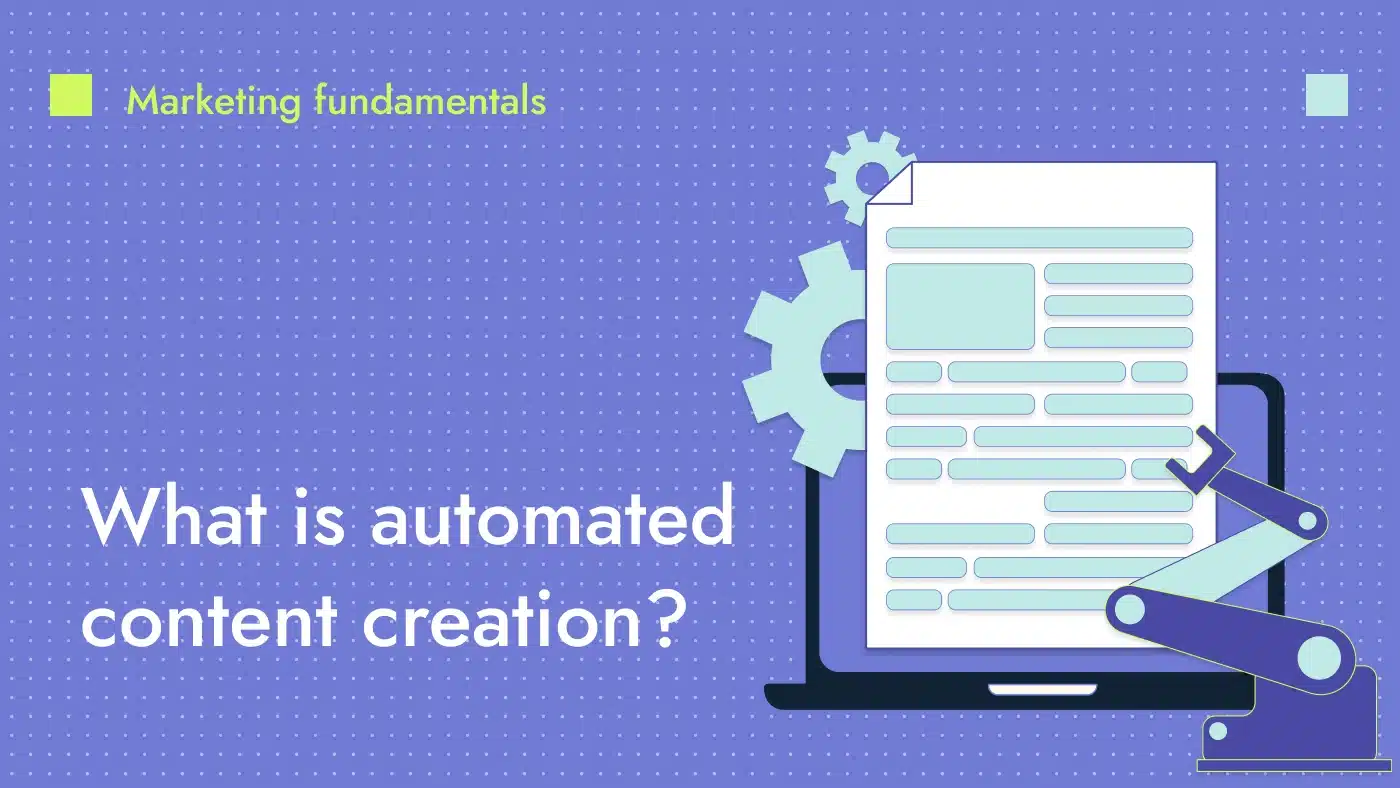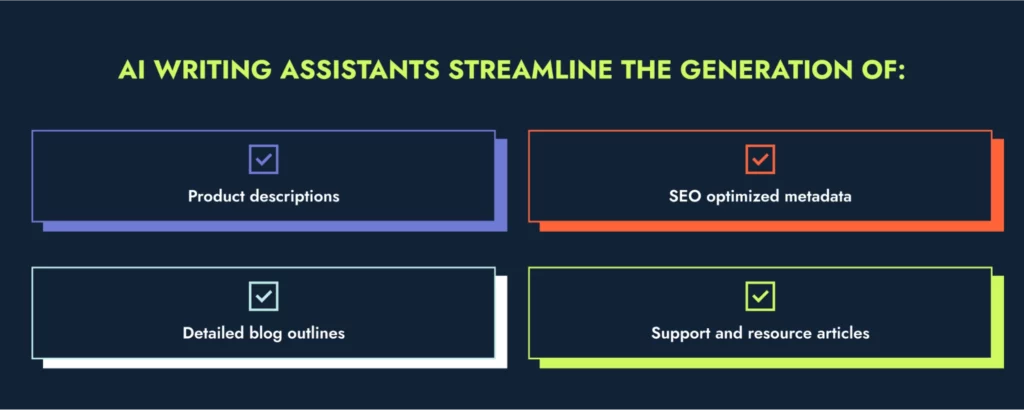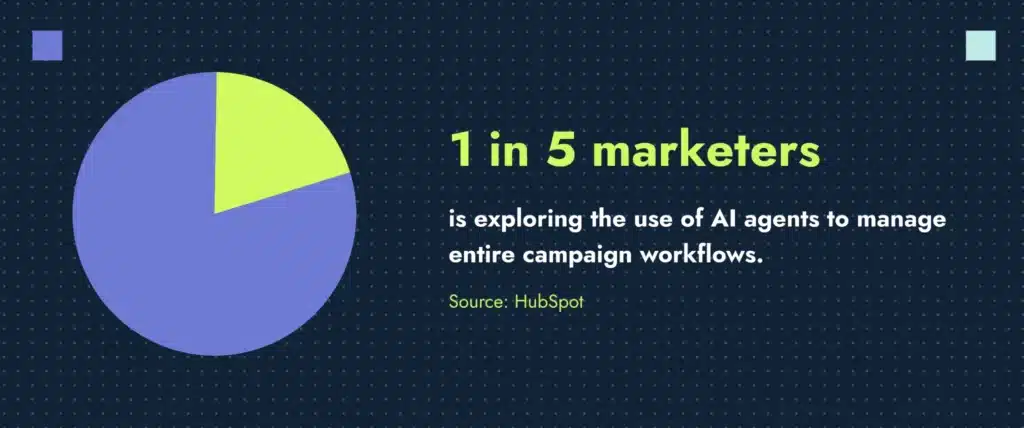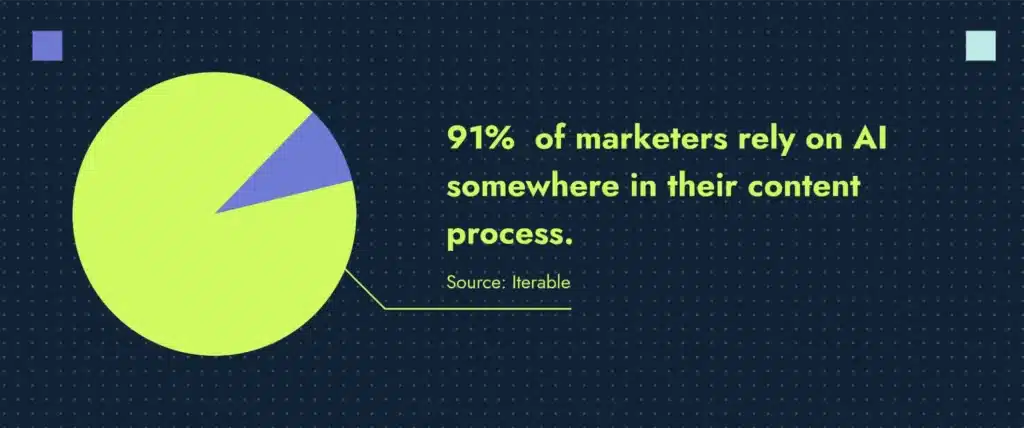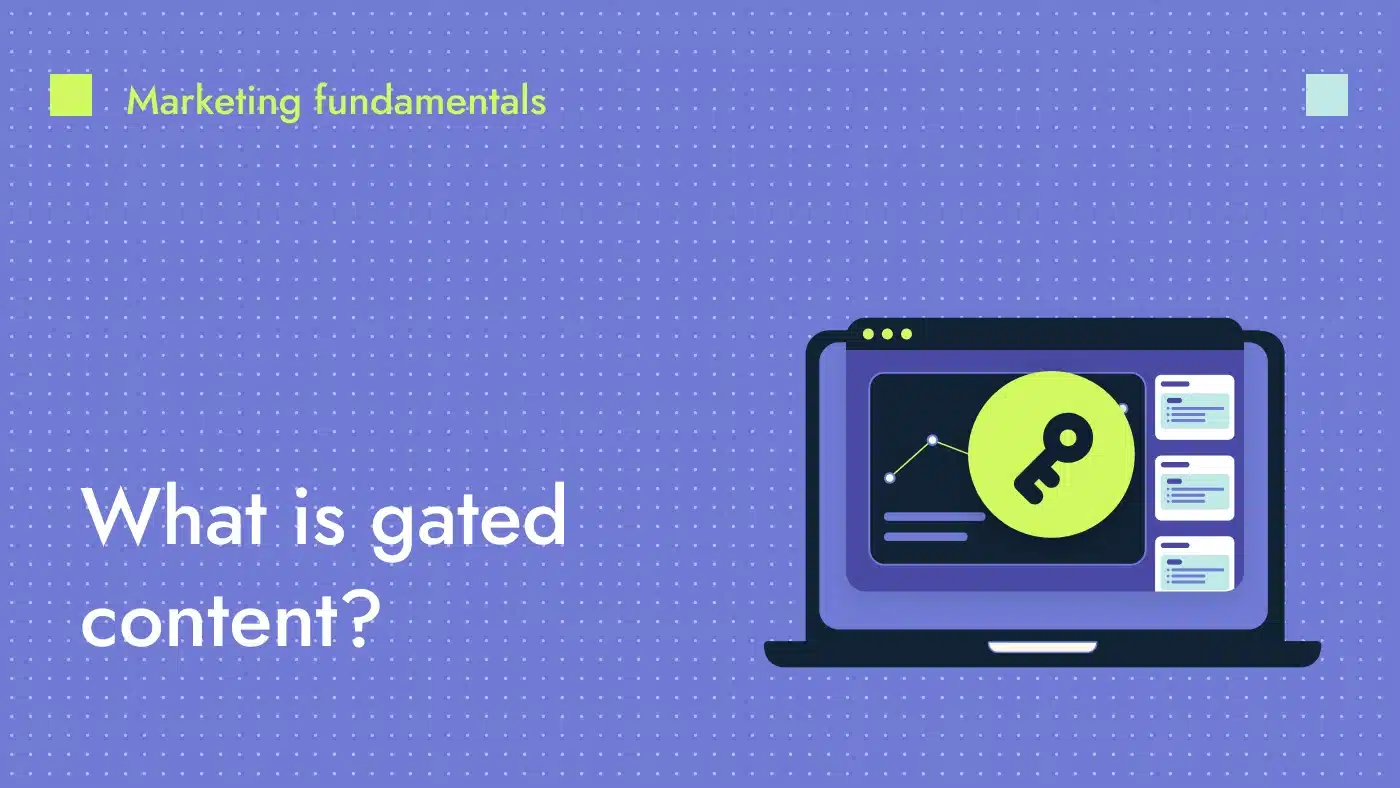Automated content creation is the process of using software solutions to streamline the development of written assets. Most teams juggle deadlines, drafts and the pressure to keep publishing. Implementing automation tools helps enhance output volume, especially for repetitive content formats.
The rise of AI writing assistants and automation platforms has made it easier to generate content like:
- Product descriptions
- SEO metadata
- Blog post outlines
- Support articles
Think of generative AI as a way to offload routine tasks so your team can focus on strategic planning, campaign execution or creative storytelling. When used effectively, content automation supports consistency, improves turnaround time and helps prevent the burnout that often comes with writing-heavy cycles.
How to automate content creation at scale: Key steps
If you want to automate content creation, the idea isn’t to replace your current process — it’s to simplify it. Start by pinpointing repetitive tasks, whether it’s drafting internal documents, help center articles or launch emails.
Once you’ve got the tasks documented, it’s easier to build AI-generation systems around them following these three steps:
- Use AI automated content creation models to create early drafts
- Set up workflows in tools like Make or Zapier to move content through your stack
- Connect your CMS so things can publish (or queue) automatically
A SurveyMonkey study found that over half of marketing teams are already applying these methods: 51% use AI to automate content writing for SEO and email campaigns, and 50% use it to generate content directly. These findings show that automation is no longer experimental — it’s part of daily operations.
⚡Want to boost efficiency? Check out our list of the best B2B copywriting tools.
Benefits of AI automated content creation for marketing teams
AI tools for content optimization are often pitched as time-savers, but what really matters is the breathing room they give your team. Marketers can redirect that energy into strategy, testing and deeper creative work by automating content creation and allowing artificial intelligence to handle templated or repetitive content.
HubSpot recently reported that one in five marketers is exploring the use of AI agents to manage entire campaign workflows — from planning to execution. That shift says a lot about where this space is heading.
Content teams benefit from:
- Less time spent formatting the same type of content
- More consistent brand voice across distributed teams
- Faster delivery of assets during busy campaign windows
- Room to work on new initiatives without hiring more writers
Maintain brand consistency when automating content creation
Speed is great, but not if your writing starts sounding generic. Automated content creation doesn’t mean publishing unreviewed drafts. In most workflows, there’s still a handoff from machine to human, just at a different point in the process.
Here is an example of how that looks in practice: this:
- Drafts are generated using pre-approved brand prompts
- A content lead or editor fine-tunes the tone and messaging to shape brand perception
- The finished high-quality content moves through a QA and publishing loop
Without that editorial touchpoint, it’s easy for content automation tools to drift into bland or off-brand territory, especially when distributed across teams or platforms. That’s why many organizations rely on brand books, tone rules and prompt libraries to preserve their identity at scale.
Editorial refinement is key, as it keeps the message aligned while letting automation carry more weight up front.
🤖 Don’t let automation destroy your voice and SEO efforts. Read our guide on avoiding AI patterns.
Tools that help you automate content development seamlessly
There’s no single tool for automating content development at scale. Most teams build their stack using a mix of tools for writing, planning and executing. The setup depends on what kind of content you’re producing and where it needs to go.
According to Iterable, 91% of marketers now rely on AI somewhere in their content generation process, showing that it’s almost impossible to stay competitive without at least a few tools in play.
Common automated content creation setups include:
- Drafting tools like Jasper or Claude to spin up copy
- Planning aids like Notion AI or Canva Magic Write to map content
- Project management workflow engines like Zapier or Make to trigger production steps, such as reviews
- Custom builds using OpenAI’s API to tailor content for your internal systems
Teams usually stitch these together, triggering content from product updates, running it through AI and loading it into a CMS without touching a Google Doc.
Streamline content creation with a comprehensive strategy
When streamlining your efforts and boosting current output beyond what your team can handle, an effective strategy can be make-or-break. At Productive Shop, we help B2B SaaS companies navigate the entire process, from well-researched editorial planning that drives results to developing content workflows.
Contact our team today, and see how we can help you set up an automated content creation process.


